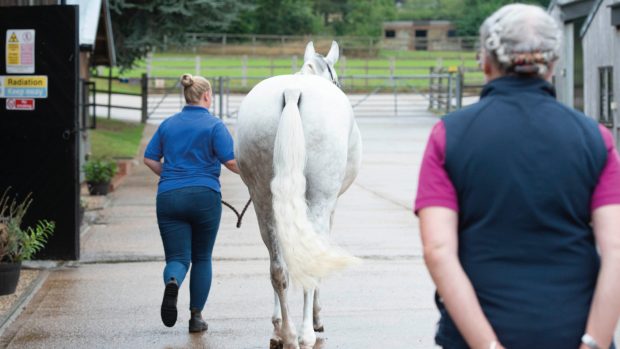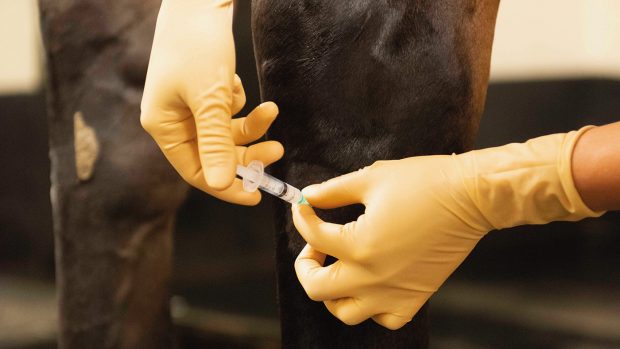More articles on lameness
Find an equine vet
Injuries that cause a horse to go suddenly lame with no obvious explanation can occur at any time, but are more likely to happen when jumping at speed is involved, such as eventing, racing or team chasing.
“Generally, the faster you go, the harder the ground and the bigger the fences, the greater the likelihood of injury,” says Bob Baskerville MRCVS. “The exception is when a horse is not adequately prepared.”
First, it is important to identify the region of the injury.
“The most common cause of sudden lameness is a problem with the foot,” adds Bob. “A stone could have become wedged, or more seriously, the horse may have a nail in the sole of its hoof.”
It is important to keep the horse as still as possible.
“When veterinary assistance is not immediately on hand, you should phone for help straight away; do no attempt to move the horse or you could cause more damage,” adds Bob.
Three tips for preventing injury
1. Ensure your horse is fit for the job:
Bob says: “I see a lot of injuries occur during low-grade sponsored rides where the horses are, generally, older and not fit enough.”
So, although it may seem obvious, ensure your horse is up to the task you are asking of him and that his fitness training has been tailored to his discipline.
2. Use appropriate leg protection:
It is better to go barelegged at an event than to use inappropriate boots and bandages. If the boots are too rigid or have too much elasticity, they can cause more harm than good.
Good leg protection serves a purpose, but it is crucial that all protection fits correctly and doesn’t hinder your horse’s action.
3. Shoe competition horses according to the job they do:
You will hinder a fit thoroughbred going at speed across country if you put weighty shoes designed for warmbloods on it.
A lot of farriers now follow the principal of keeping the toe short and the heel higher. This is fine for horses needing remedial shoeing and for those not expected to perform at speed, but if a galloping horse has its heels too high, it has the potential to overload the superficial flexor tendon.
For the full article on sudden lameness, see the current issue of Horse & Hound (25 February, ’10)
Looking for more articles on lameness?
Find an equine vet near you



